
Hike the Thorsborne Trail
Hinchinbrook Island sits 8km off Queensland’s Cardwell coast (the small town of Cardwell is roughly midway between Cairns and Townsville) and is the physical embodiment of a Hollywood tropical island. Hinchinbrook is one of Australia’s largest island national parks – it covers 39.3sq.km – and it is on this wonderland that 40 hikers a day get to experience true tropical Queensland conditions when they tackle the four-day, 32km Thorsborne Trail.
This world-rated multiday hike starts at Nina Bay in the north of the island, with walkers winding their way south to trail’s end at George Point. Over the course of the four days of moderate to challenging walking, following a rugged, rough track, you will move through everything from mountainous areas and long, deserted beaches, to eucalypt forest and lush tropical rainforest, with a number of pristine waterfalls along the way.
The trailhead is reached via a 40-minute boat trip from the coastal town of Cardwell, crossing the narrow Hinchinbrook Channel that separates island from the mainland. During this journey you will see an abundance of mangrove. This plant thrives here; the channel is claimed to be one of the largest mangrove habitats in the tropical north. Marine animals, such as dugongs and green sea turtles, are often seen here, with saltwater crocs also present.
Walkers can expect tropical forests, golden, sandy beaches, rocky headlands and bubbling creeks. The track itself is not graded and can be quite rough in parts so a good sense of balance, some multiday trek experience, and decent trekking fitness are essentials for optimum enjoyment. The depth of the waterways will depend on the season; a big Wet Season dump of rain can cause creeks to rise dramatically, with the potential of leaving you stranded for a day or more, unable to cross. It doesn’t hurt to allow for an extra day just in case, especially if walking the Thorsborne out of season.
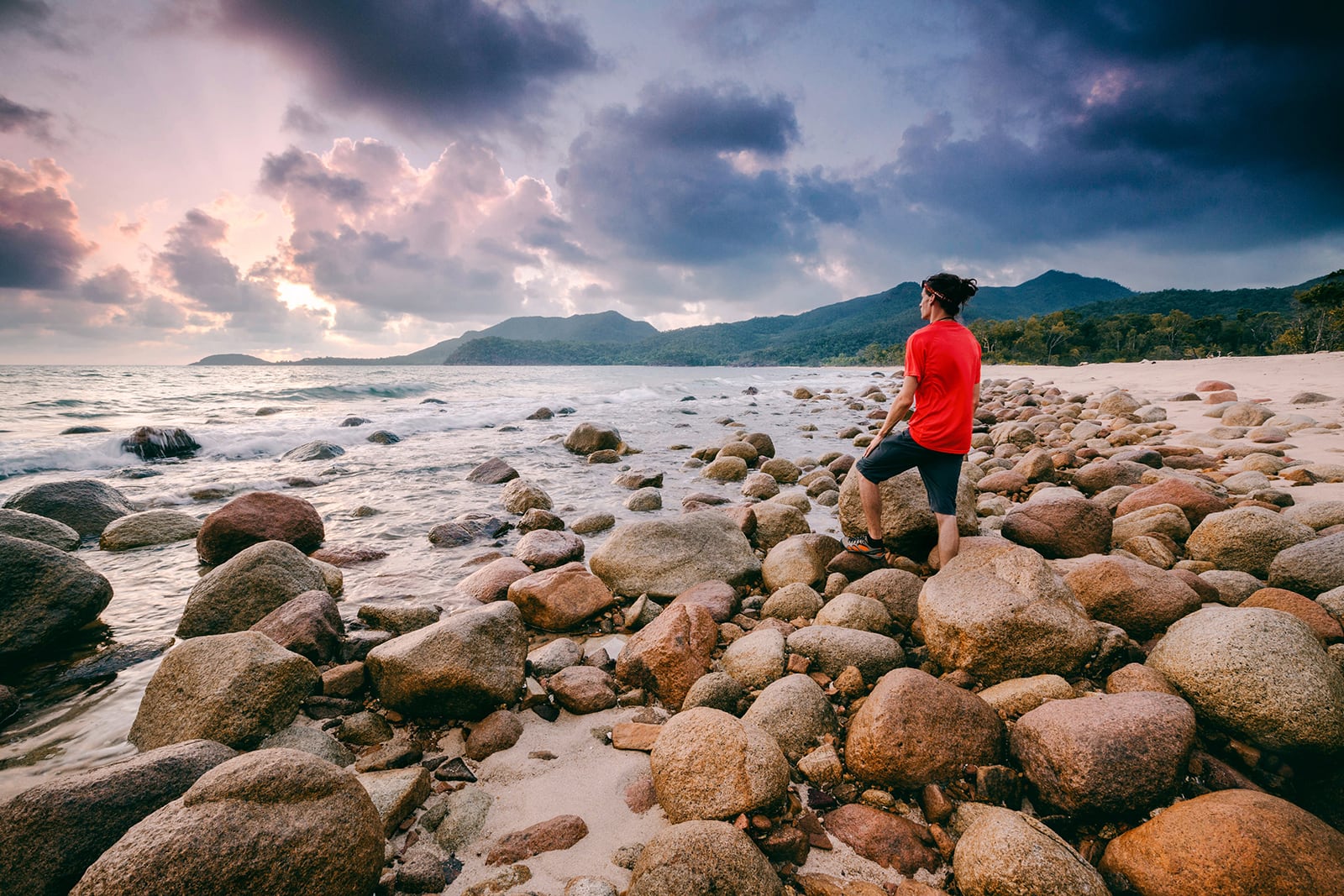
As well as the main track, there are plenty of side-tracks, with the one-hour-return Nina Peak walk worth the effort; you will nab great views of the island’s highest mountain – 1121m Mt Bowen – from this viewpoint.
The Thorsborne has seven campsites, with six of these near beaches. The standout is the campsite at Mulligan Falls, toward the track’s southern section, where you camp under the rainforest canopy right near the waterfall.
Peak walking time is April to September, owing to cooler conditions. You must also be self-sufficient, carrying all food/supplies/equipment, and even though there are creeks on the island, they can run dry, so take a minimum of 4L of water per person as a backup. Also pack water purification tablets (or a filter). It’s a great trek and, at four to five days, makes for brilliant hiking bang for your bucks in terms of time and scenic rewards.
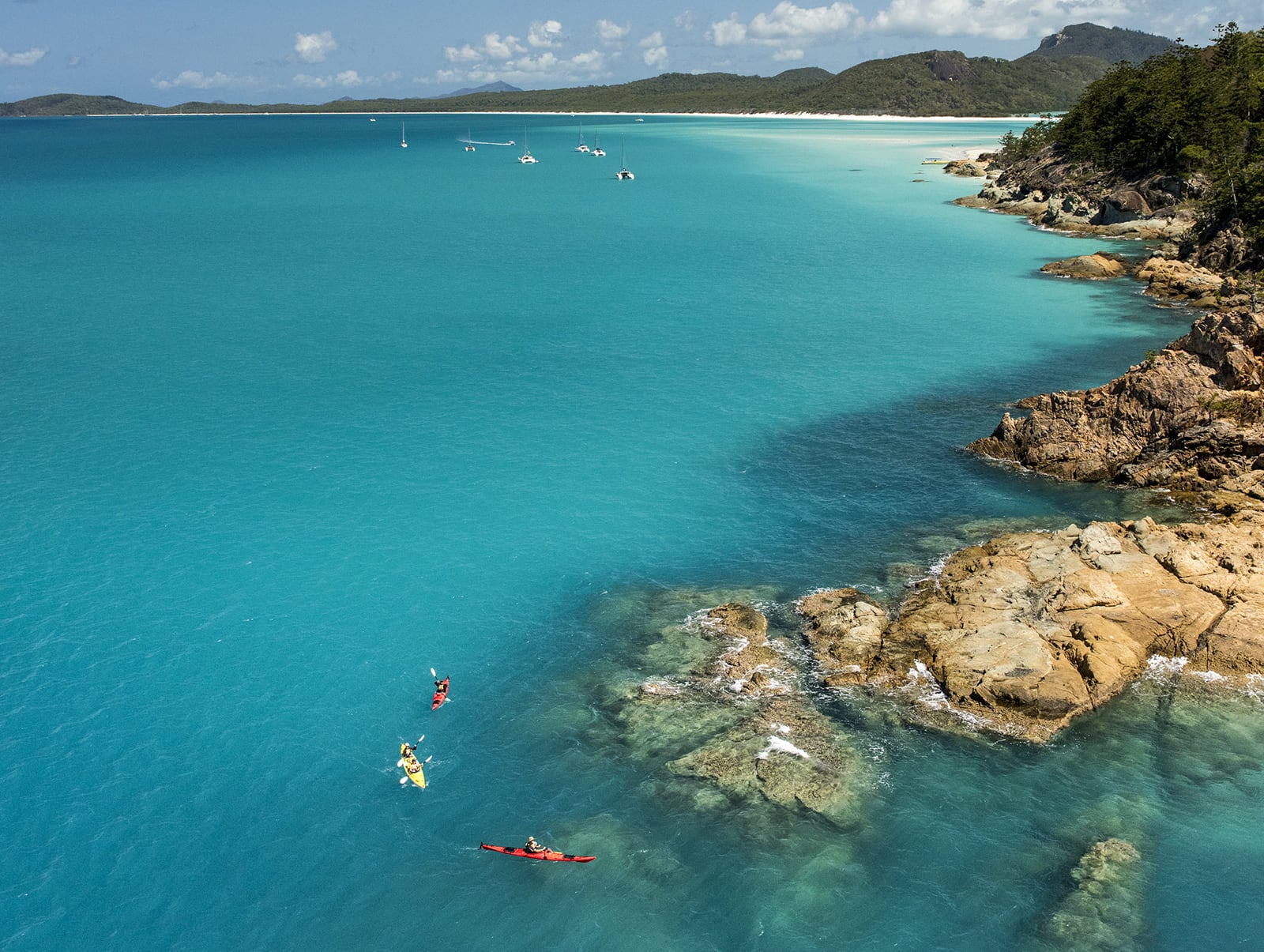
Paddle the Ngaro Sea Trail
Named after the traditional owners, the Ngaro Sea Trail is a five-day sea kayak journey that sees you paddle between Whitsunday, South Molle and Hook islands, and sample each of these island’s many walking tracks.
The beauty of the Ngaro Sea Trail is it can be as big or as small an adventure as you want it to be. Be conscious of your skill level when it comes to planning your journey as, even though the waters surrounding these islands can seem benign, the weather can change quickly. Being fit and prepared for all circumstances when it comes to weather – and being confident in your self-recovery technique, expedition skills and open water skill set – ensures a fantastic five days of paddling and camping in some of the best sites in Oz. If you’re not sure you’d be comfortable tackling the journey on your own, the alternative is to sign on to a guided paddle adventure. In some ways, this is the best option for the Ngaro Sea Trail as you’ll be both well looked after (read: safe) and also get more insight into the route’s culture and history.
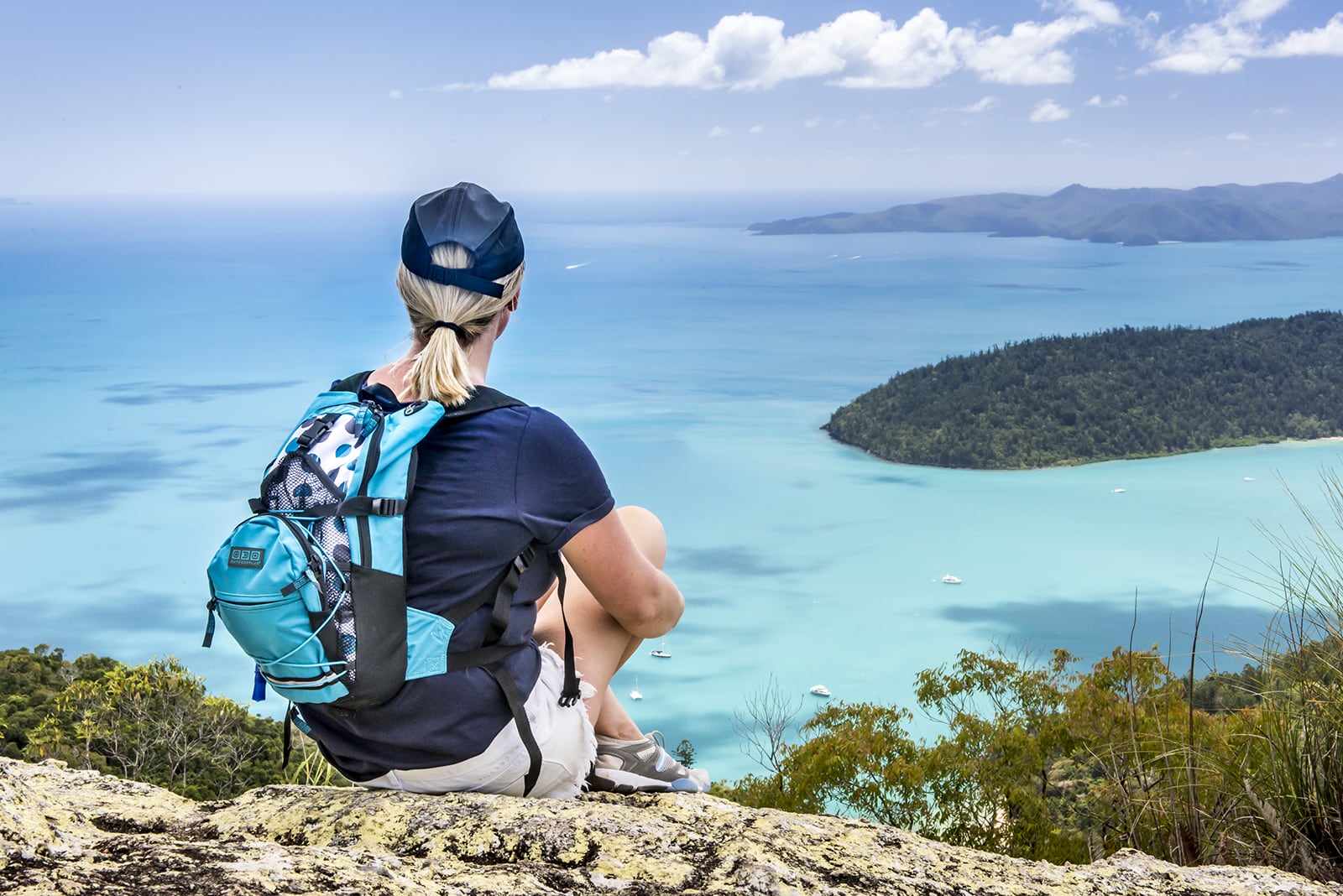
Picturesque Shute Harbour, on the north-eastern beachside border of Conway National Park, is your starting point. From here, your first night’s destination will depend on fitness levels but more heavily on the weather. The nearest island campsite is South Molle Island’s Paddle Bay – a great first-day option (only 8km) if the easterly winds are blowing. If it’s calmer, then either Henning Island, directly east of Shute Harbour, or Cid Island, to the northeast, are good options for the first paddle, with Henning Island around 19km from Shute Harbour.
Once you leave Henning Island head north and try to reach Sawmill Beach in the early afternoon before tackling the walking track up to Whitsunday Peak, a lofty 435m above the water. If it is a clear day, you’ll cop some amazing views out and across South Molle Island and back to where you started from on the mainland. The campsite near here is just around the bend, at Dugong Beach.
From here, you have two options for the next day. If it’s calm, we’d recommend sticking close to Whitsunday Island and paddling north, with the aim of reaching the Ngaro Cultural Site at the head of Hook Island’s Nara Inlet.
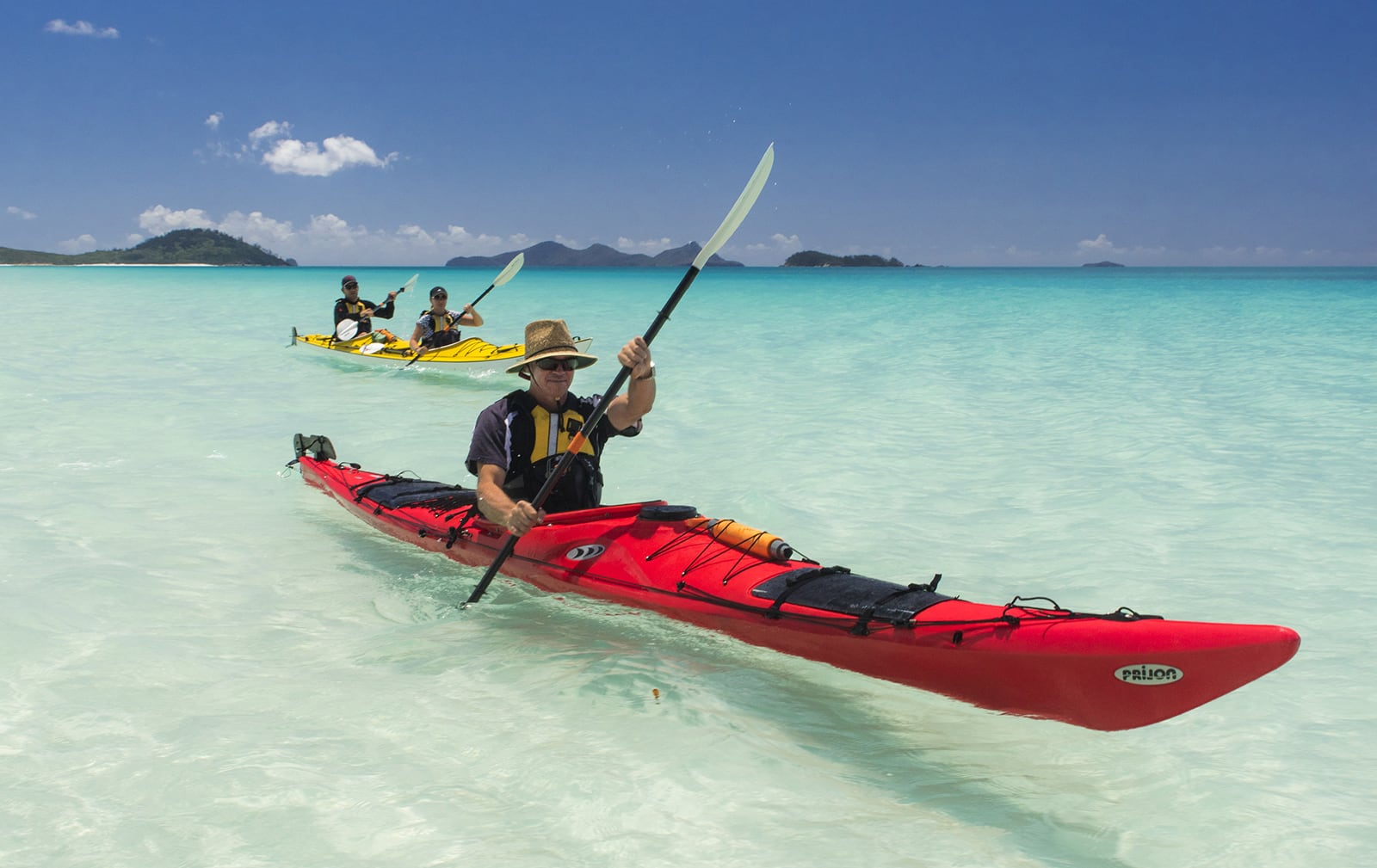
From Nara Inlet, the campsite of Curlew Beach (which you would have paddled past) is just a small paddle back out of the inlet and sets you up for either a return trip across Whitsunday Passage to the mainland or a continuation around the eastern coastline of Whitsunday Island, via Hook Passage, the narrow waterway that separates Hook Island from the tip of its larger southern sibling.
The paddle down Whitsunday Island’s eastern side can take from two to four days, depending on weather, but there are myriad campsites along that coast. So, if you have the time, take it; once you’re back on the island’s southern end, civilisation is only a day’s paddle away and, after a week in a kayaker’s paradise, you won’t want to rush it.
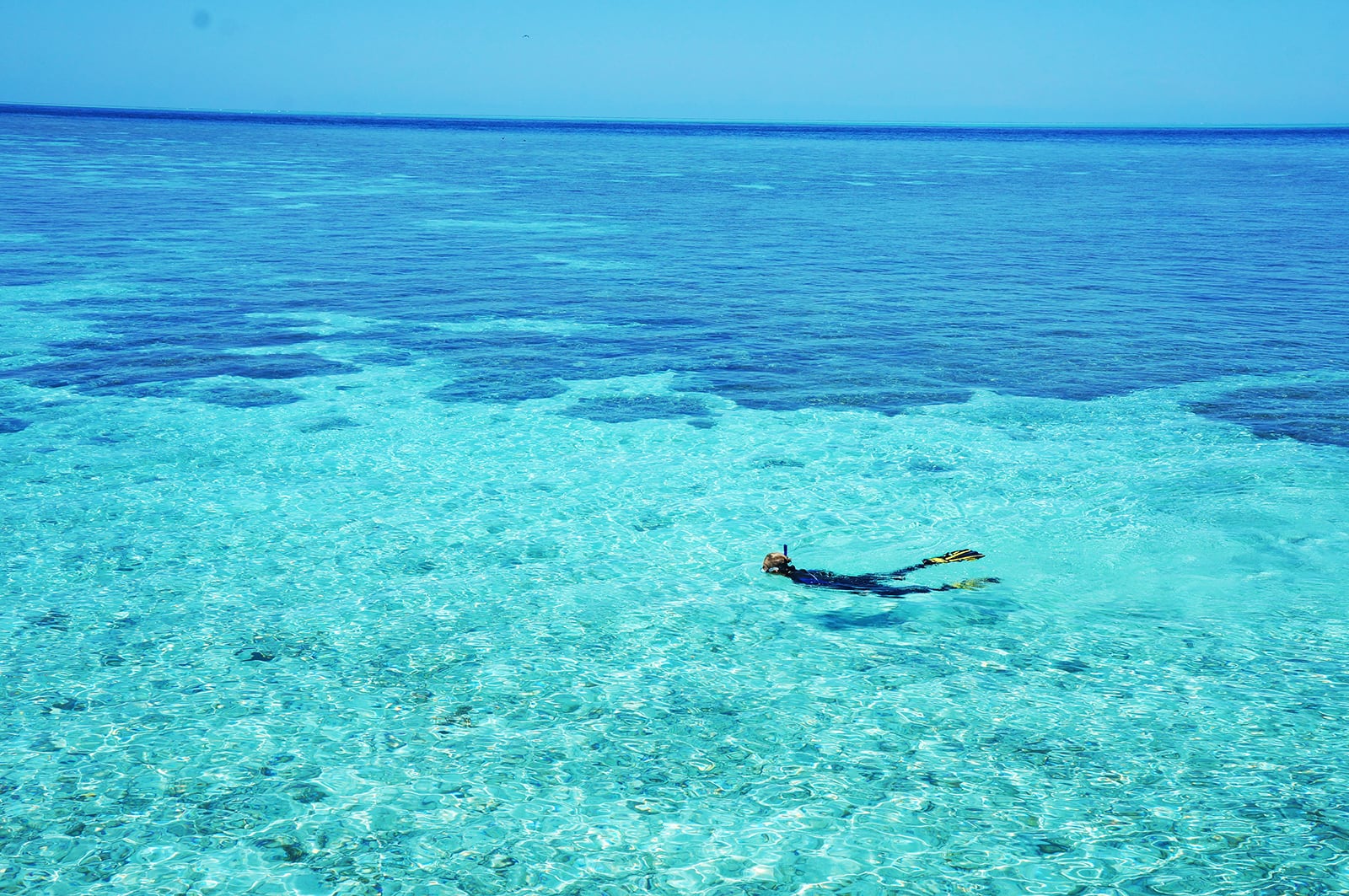
Snorkel the Great Barrier Reef
It may sound pretty obvious, but the Great Barrier Reef has to rank as one of Australia’s best snorkelling locations. Consisting of more than 3000 individual reefs and 900 islands – all set in tropical waters that drop no lower than 21°C during the coldest months of the year – the reef is a snorkeler’s dream and ranks high on most adventure bucket lists.
Running almost the entire length of the state, from Cape York down through to Bundaberg, the reef is the largest living thing on Earth, spanning an impressive 2300km along the coastline. It can be divided into three main types of reef – fringing, platform, and ribbon – each with their own unique coral structures and diving depths, and each suited to different skill levels.
Fringing reefs are generally the most common seen by snorkelers and are found attached to the mainland, or to the continental islands dotted through the marine park. They are easily accessible and to see them you need only find a beach, chuck on your gear, and hit the water. Because they grow closer to shore, they are often not very deep, and you are more likely to see the more brightly coloured soft corals and anemones, which are displayed in most aquariums and fish tanks.
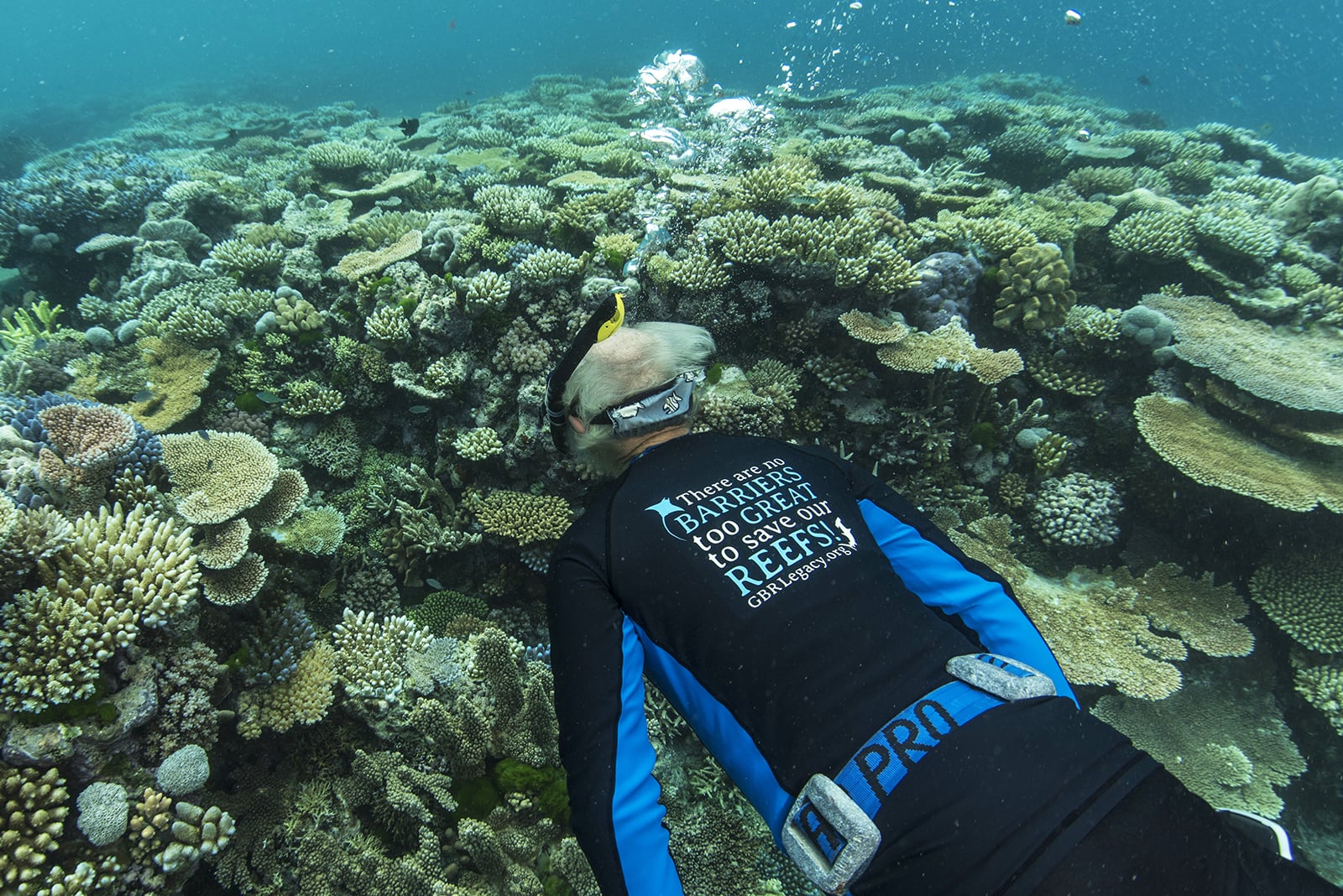
Platform reefs (also known as patch reefs) are scattered in the calm, shallow waters between the mainland and edge of the continental shelf. They are usually round or oval patches and often tend to be broken up, and you’ll need a boat to reach one. Many ports along the coast offer day trips to these systems where you can snorkel directly off the boat, and most will even provide the snorkelling gear. They’re in a little deeper water so you’ll find more of the hard coral structures and bigger marine life like turtles, rays and even reef sharks, though some might find swimming against the offshore currents a little harder.
Ribbon reefs, while stunning, are harder to get to. They line the continental shelf and to get there you’ll not only need a boat, but one you can overnight on, as they’re located a minimum 65km offshore. These massive structures snake along the continental shelf and form “walls’ of coral that in some places can be over 20m tall. They form their own bomboras against incoming ocean currents and the waves and constant pull from the currents can be a little hard going – but the marine life here is as stunning as the coral with many of the larger species of reef fish and sharks living among coral as big as a VW Beetle.
Snorkelling is a great outdoor activity, and one suited to all ages, with the Great Barrier Reef undoubtedly one of the best places for it. Just remember to always snorkel with a buddy, apply loads of sunscreen, and don’t touch or handle anything below the surface. – Jess Teideman

Ride Atherton Mountain Bike Park
Tropical North Queensland might seem like an unlikely mountain bike hotspot – after all, it can be very hot and humid during part of the year – but Cairns and the surrounding region are, in fact, rated as one of Australia’s best MTB destinations.
A constantly growing trail network and the 2017 MTB World Championships all turned rider focus toward this tropical north Queensland hotspot. Of course, it is not just Cairns riders make the long journey north for; the tablelands town of Atherton, perhaps one of the most underrated gems in Australian mountain biking, is another reason.
Atherton is about an hour away from Cairns, inland up on the tablelands at a lofty 800 metres above sea level. Atherton itself has none of the glitz of Cairns – its population is around 7000 – but that quiet exterior hides the fact that this town has one of Australia’s most sensational trail networks; the Atherton Mountain Bike Park.
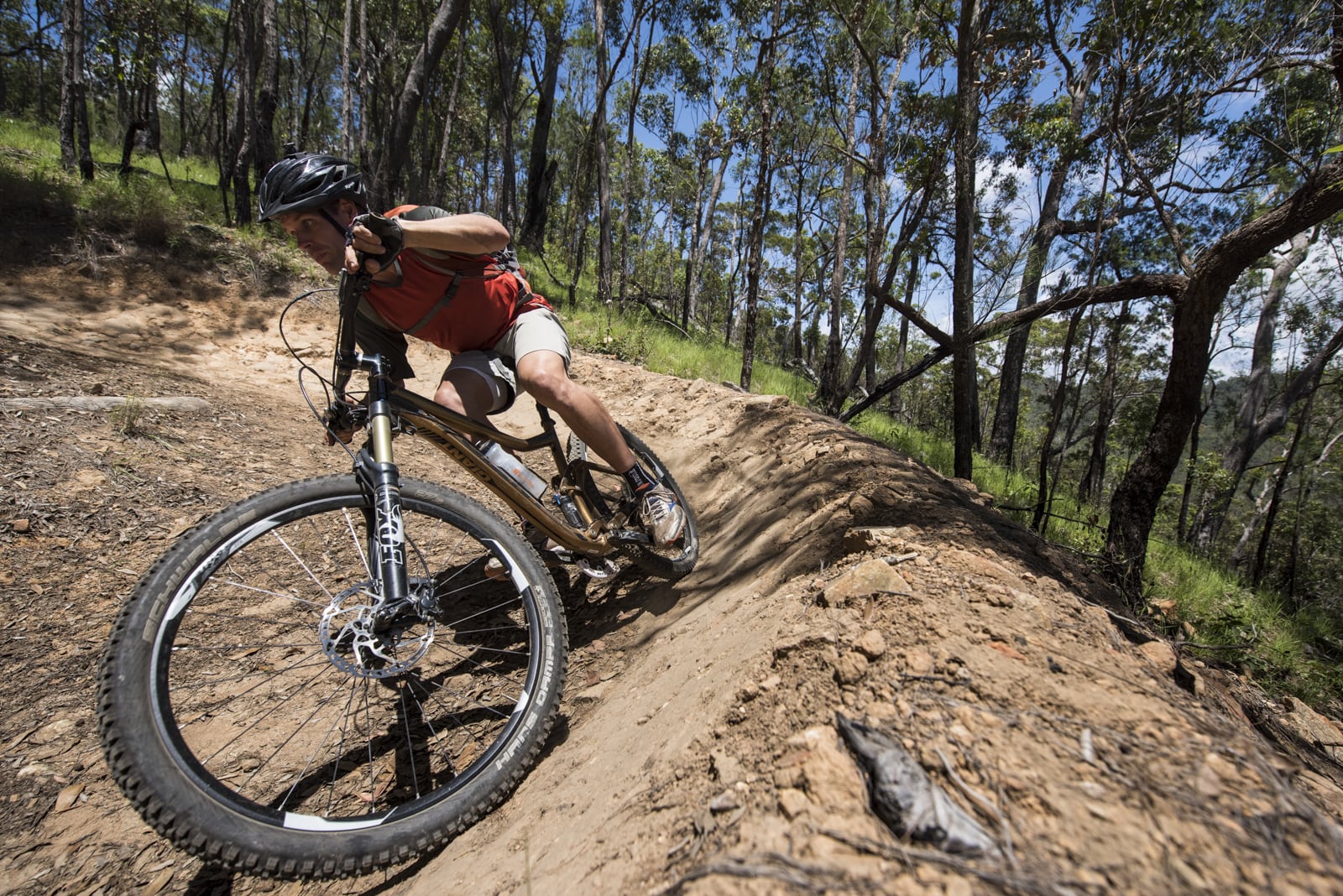
Atherton meets all the ‘successful mountain bike town’ criteria: a great climate, awesome terrain, and the chance to ride to the trail network directly from town. Indeed, the trailhead (with change rooms and bike wash facilities) is right on the main street, with the link trail out to the network, for incredibly easy trail access/return.
A mix of trail builders, including two of Australia’s most reputable trailsmiths – World Trail and Dirt Art – have contributed to Atherton’s 55km-plus trail network, which sprawls over Baldy Mountain Forest Reserve and Herberton Range State Forest. Most of the riding is flow trail, best suited to cross-country or trail bikes. There’s nothing too technical, although the ease with which you garner speed should be enough to keep you focused.
You will find the easier trails in the lowlands, while the intermediate trails cloverleaf off, taking you out into the hills. It’s a smart layout that’s ideal for groups of mixed abilities; in short, everyone has an awesome time riding, regardless of mismatched skill levels. The official trail maps are numbered; highlights include the bobsled descent of Trail 9 and the epic Trail 12, which loops off onto a life-changing descent and a scenic, gradual climb that takes you to the park’s highest point. For shorter loops, climb up to The Roundabout, and link up Trails 6 and 7.

Atherton has enough riding on tap to keep you busy for at least three days – and then there’s the nearby Davies Creek trail network too. This all adds up to a potential week of epic riding, followed by the chance to recount your thrills and spills at one of Atherton’s excellent pubs each evening. Yeah, we know, it sounds bloody brilliant!
For keen mountain bikers, the Cairns region is an absolute must. With more than 700km of trails (plus whispers of a multi-day trail being developed, linking Port Douglas and Cairns), if you don’t allow at least a week up here, you’ll be doing this region – and yourself – a huge disservice.
More information
Hiking the Thorsborne Trail: See Queensland Department of Environment and Science for info on this hike and Hinchinbrook Island.
Diving the Great Barrier Reef: See Tourism Tropical North Queensland for all GBR info.
Mountain biking Atherton and Cairns: See Atherton Tablelands Trails and Ride Cairns for all info on knobby-tyre adventures in Tropical North Queensland.
The Ngaro Sea Trail: See Queensland Department of Environment and Science for info on this unique marine adventure.
See Tourism Queensland for all things Sunshine State.



